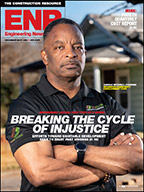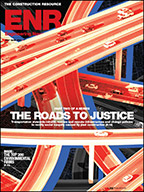In the post 9-11 environment we have invested significant resources to characterize the vulnerability of critical infrastructure and appropriately develop means to reduce that vulnerability. That investment continues as a key element of the DOD and Dept. of Homeland Security budgets.
If you search for funding that is focused on the rehabilitation and renewal of our aging public infrastructure (see the American Society of Civil Engineers’ Infrastructure Report Card), the investments are not nearly so significant.
Beyond the National Science Foundation grants program, there is little if any basic research being funded. The majority of the R&D funded by agencies such as the U.S. Army Corps of Engineers, the National Institute of Science and Technology, and the Bureau of Reclamation, is very applied and aligned with specific near-term needs and persistent problems.
In many cases there is little discretionary funding available to exploit the substantial military research being done into new materials and technologies that could be applied to civil infrastructure.
One can imagine a future where our critical civil infrastructure crumbles under its own degradation, while perfectly guarded from external threats by sophisticated sensors and protected by exotic new materials.
There are an immense number of options for spending our hard earned tax dollars. Currently, the majority of those options are being expended solving near term goals, and they make sense in that regard. However, the proportion dedicated to the long term is much smaller, and that does not make sense.
We are sacrificing not only the livelihood and potential of the students who are the lifeblood of the academic system, but the livelihood and economic prospects of our nation.
In my 45 years of being involved with R&D in one form or another, perhaps the most frustrating thing has been watching the repeated cycles of sacrifice of R&D investments whenever the going gets tough.
Each time we have sought to protect the present on the back of the future.
Yet, as we move to the future, the same issues that caused the trauma in the present persist into the future and converge with additional factors to increase the challenges.
Dealing with the confluence of our aging infrastructure, the changing climate and changing population and associated demands will need all of our intellectual resources, trained to the maximum, to cope. The investments to do so are in fact quite affordable—yielding a 9 to 1 return on investment, based on the earlier example from the ITIF.
Unless we change course and stop draining academic funding for basic research, when next we open our seed bag for the future, it will be empty.
It is untenable to think that all short term investments should suffer for the sake of the long term; however, it is prudent when making these critical investment decisions that a balance be achieved that assists in preparing us to meet the future.
We cannot afford to continue to eat our seed corn!



Post a comment to this article
Report Abusive Comment